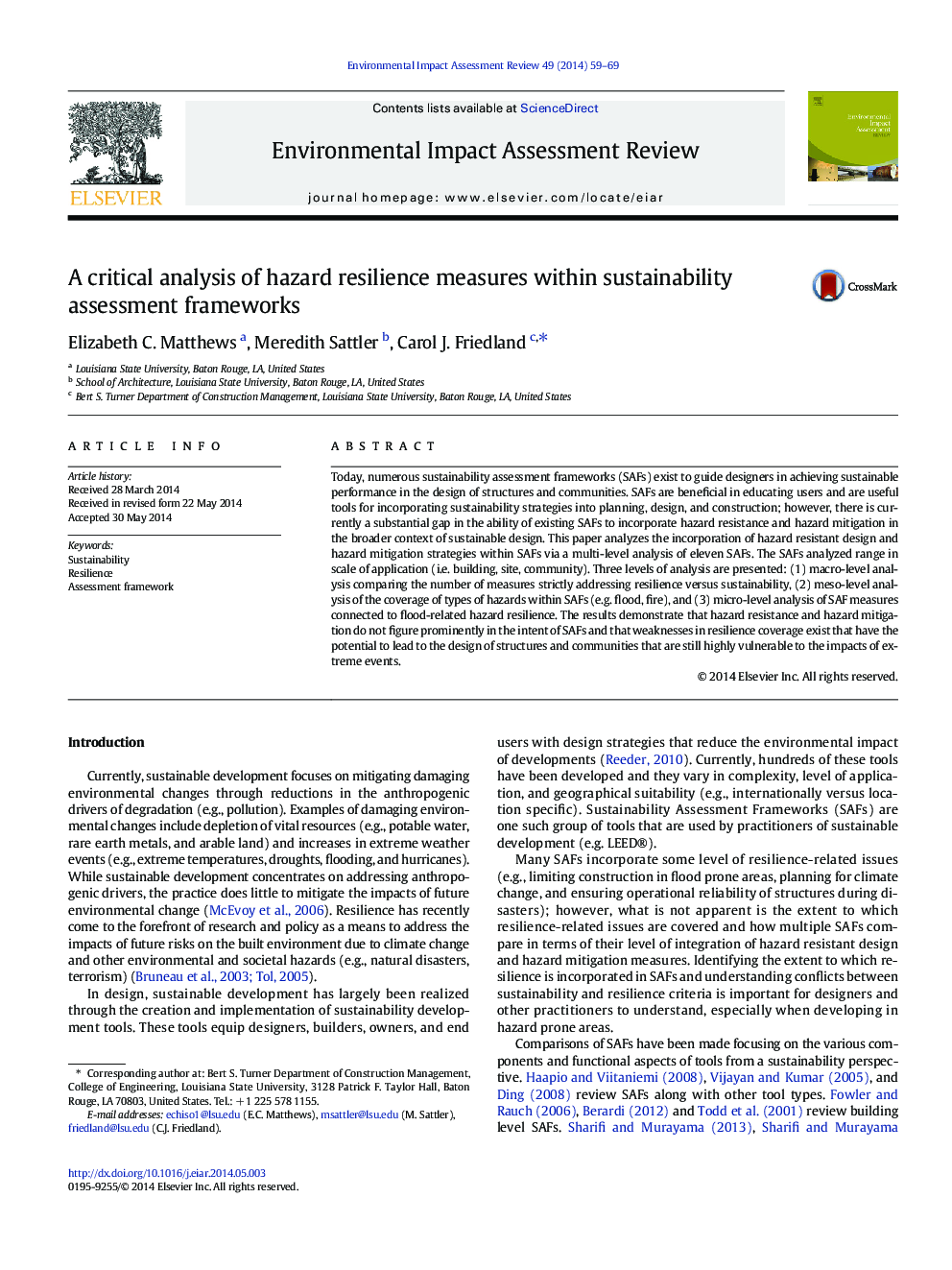| Article ID | Journal | Published Year | Pages | File Type |
|---|---|---|---|---|
| 1052719 | Environmental Impact Assessment Review | 2014 | 11 Pages |
•Sustainability assessment frameworks (SAFs) were analyzed for resilience coverage•Hazard resistance and mitigation do not figure prominently in the intent of SAFs•Approximately 75% of SAFs analyzed address three or fewer hazards•Lack of economic measures within SAFs could impact resilience and sustainability•Resilience measures for flood hazards are not consistently included in SAFs
Today, numerous sustainability assessment frameworks (SAFs) exist to guide designers in achieving sustainable performance in the design of structures and communities. SAFs are beneficial in educating users and are useful tools for incorporating sustainability strategies into planning, design, and construction; however, there is currently a substantial gap in the ability of existing SAFs to incorporate hazard resistance and hazard mitigation in the broader context of sustainable design. This paper analyzes the incorporation of hazard resistant design and hazard mitigation strategies within SAFs via a multi-level analysis of eleven SAFs. The SAFs analyzed range in scale of application (i.e. building, site, community). Three levels of analysis are presented: (1) macro-level analysis comparing the number of measures strictly addressing resilience versus sustainability, (2) meso-level analysis of the coverage of types of hazards within SAFs (e.g. flood, fire), and (3) micro-level analysis of SAF measures connected to flood-related hazard resilience. The results demonstrate that hazard resistance and hazard mitigation do not figure prominently in the intent of SAFs and that weaknesses in resilience coverage exist that have the potential to lead to the design of structures and communities that are still highly vulnerable to the impacts of extreme events.
